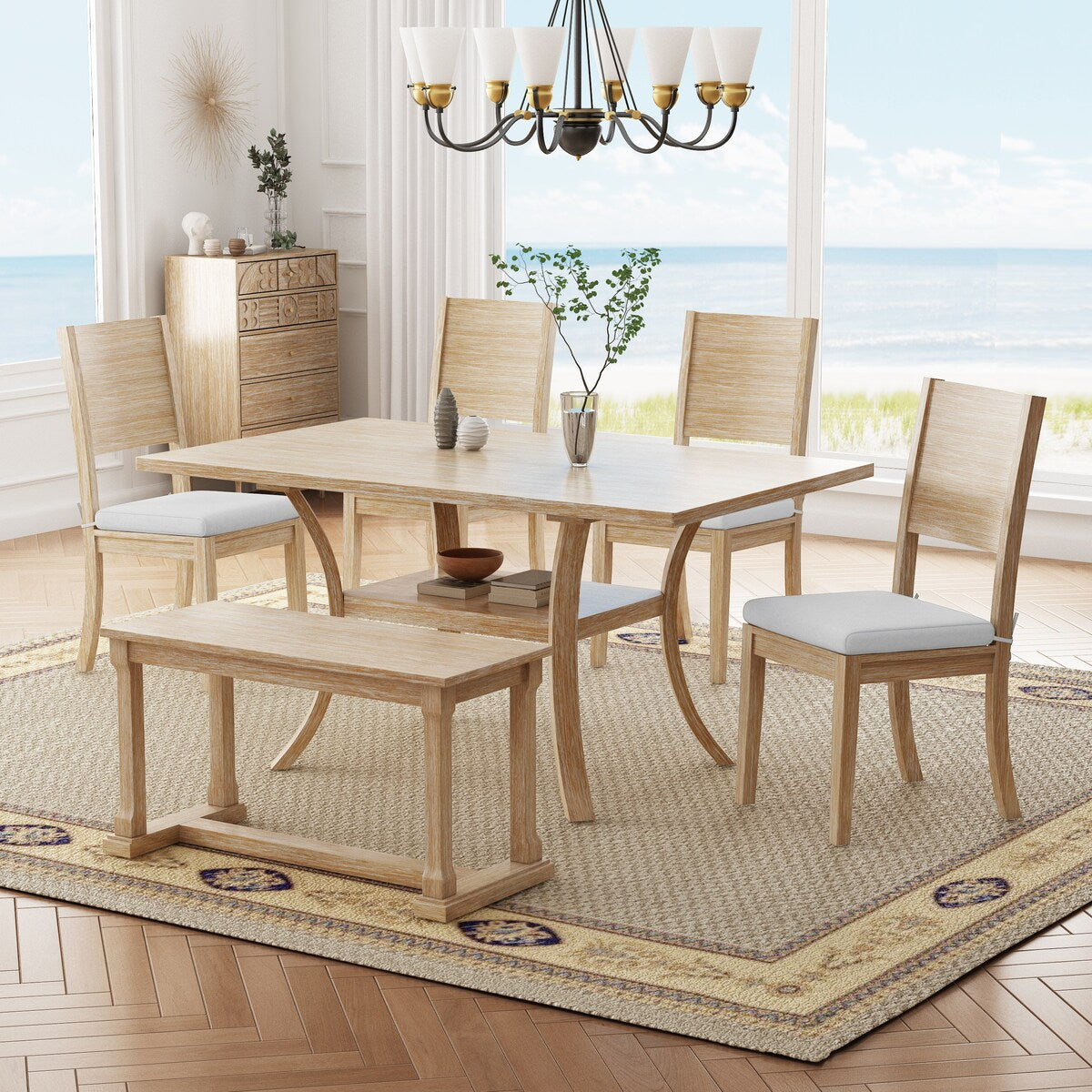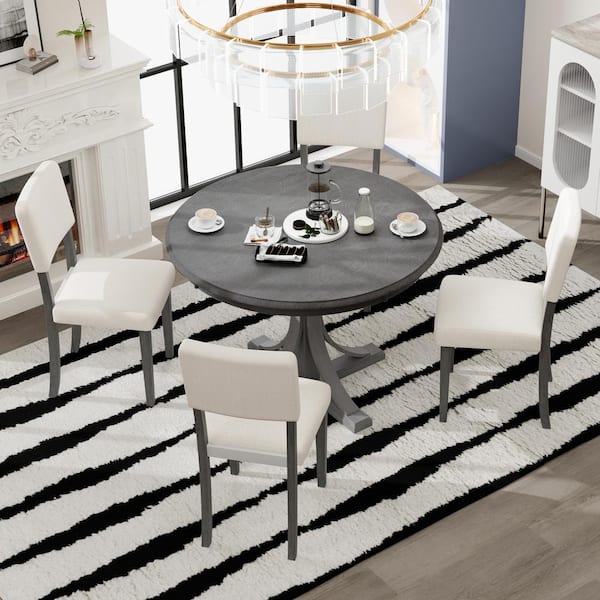How the Right Dining Room Table Legs Can Complete Your Dining Room Look
How the Right Dining Room Table Legs Can Complete Your Dining Room Look
Blog Article
Just How to Choose the Perfect Dining Space Table Legs for Your Home Decor
Selecting the suitable dining area table legs is a nuanced process that requires cautious factor to consider of numerous elements, including your space restrictions, visual choices, and sensible needs. The interaction in between dimensions, styles, and materials can substantially affect the setting of your eating location, making it crucial to approach this decision systematically. As you ponder the myriad alternatives available, it comes to be clear that the best selection prolongs past simple look; it can enhance your general dining experience. What elements should you focus on to guarantee your choice enhances your home's one-of-a-kind character?
Assess Your Dining Space
Analyzing your dining room is critical for selecting the right table legs that complement both appearances and capability. Begin by determining the dimensions of your dining area, including ceiling elevation, floor space, and distance to various other furnishings. This information will aid establish the proper size and height of your eating table, which directly influences the option of table legs.
Following, think about the design and layout of your dining area. An open-concept design may benefit from table legs that supply aesthetic lightness, such as slender steel or acrylic choices. On the other hand, a more conventional setup may ask for tough wooden legs that offer a sense of permanence.
Assess the existing shade palette and materials in your eating area. Integrating the table legs with these elements develops a cohesive look that improves the overall design. In addition, think of the functionality needed in your area. If you regularly hold large gatherings, take into consideration legs that offer additional assistance and security.
Ultimately, an extensive evaluation of your dining room will direct you in making an informed decision, making certain that your table legs not just boost the aesthetic appeal yet additionally serve sensible functions.
Consider Your Style Preferences
When picking dining-room table legs, it is necessary to assess your personal design choices, as they substantially influence the total aesthetic of your eating space. Your selection of table legs can either complement or contrast with existing design, making it crucial to straighten them with your recommended interior decoration theme.
If your home leans in the direction of a modern visual, think about streamlined steel or minimal wooden legs that provide a clean, minimalist look. For an extra typical method, elaborate wood legs with complex makings can include a touch of style and refinement. Industrial designs gain from durable, resources such as reclaimed timber and metal combinations, reflecting a tough beauty.
Additionally, farmhouse and rustic styles typically favor sturdy, chunky legs that stimulate a sense of heat and comfort. Alternatively, if your design is diverse, you could choose unusual forms or a mix of materials to create visual interest.

Evaluate Material Options
The choice of material for eating space table legs plays an essential function in both toughness and visual allure. Usual materials consist of wood, metal, and composite alternatives, each offering distinct attributes that can affect the total look and durability of your table.
Wood is a classic choice, known for its warmth and flexibility. Woods like oak and walnut give outstanding strength and can be completed in different discolorations to match any kind of style. Softwoods like want are extra prone to scrapes and dents, making them less excellent for high-traffic locations.
Metal legs, frequently crafted from steel or light weight aluminum, emanate modernity and industrial appeal. They are extremely sturdy and resistant to put on, making them ideal for families with children or frequent celebrations (dining room table legs). Furthermore, steel can be finished in different colors, improving the modification opportunities
Composite materials, such as MDF or laminate, offer price and varied designs. While usually much less sturdy than solid timber or metal, they can still offer an elegant appearance and are often easy to preserve.
Inevitably, the material you select need to straighten with your way of living, aesthetic preferences, and the level of use your table will certainly experience.
Determine Height and Size
Picking the suitable height and dimension for your eating area table is crucial for both functionality and comfort. The common elevation for dining tables typically varies from 28 to 30 inches, enabling adequate legroom for the majority of people when seated. It is crucial to think about the measurements of your eating area and the types of chairs you intend to utilize.

Additionally, think about the percentages of your eating area. this hyperlink A larger table in a large area can develop a grand setting, while a smaller table works well in even more intimate settings. Ultimately, the right elevation and size will harmonize with your total design and improve the eating experience for you and your visitors.
Explore Modification Possibilities

In addition, the layout of the legs can be customized to fit different styles, such as rustic, contemporary, or commercial. Conical legs can evoke a mid-century modern feel, while beefy, block-style legs might investigate this site reverberate with typical or farmhouse decoration.
Property owners can likewise explore shade finishes, from all-natural timber spots to paint, enabling them to match or contrast with the table top and surrounding design.
In addition, leg height can be changed to fit details seating plans or individual preferences, improving both comfort and functionality.
Finally, distinct embellishments, such as makings or attractive brackets, can additionally customize the table legs, making the dining experience not simply a meal yet a declaration item in the home. By considering these personalization choices, homeowners can create a dining-room table that really shows their individuality.
Final Thought
Choosing the optimal dining room table legs calls for careful factor to consider of different factors, including the dimensions of the eating space, style choices, product longevity, and desired elevation. Personalization options further boost the capability to attain a cohesive aesthetic that complements the general style. By systematically examining these components, home owners can make sure that the chosen table legs not just fulfill practical requirements yet additionally contribute positively to the dining experience and ambiance of the home.
Choosing the optimal eating space table legs is a nuanced process that needs careful consideration of various elements, including your room restrictions, visual choices, and sensible requirements.Examining your dining space is important for selecting the right table legs that complement both aesthetic appeals and functionality.When establishing size, determine the area where the table will certainly be positioned to guarantee it fits conveniently, permitting for at least 36 inches of clearance around the table for easy activity. A larger table in a roomy location can produce a grand setting, while a smaller sized table functions well in more intimate setups.Choosing the suitable dining room table legs needs careful factor to consider of various aspects, including the measurements of the eating room, style preferences, product durability, and desired height.
Report this page